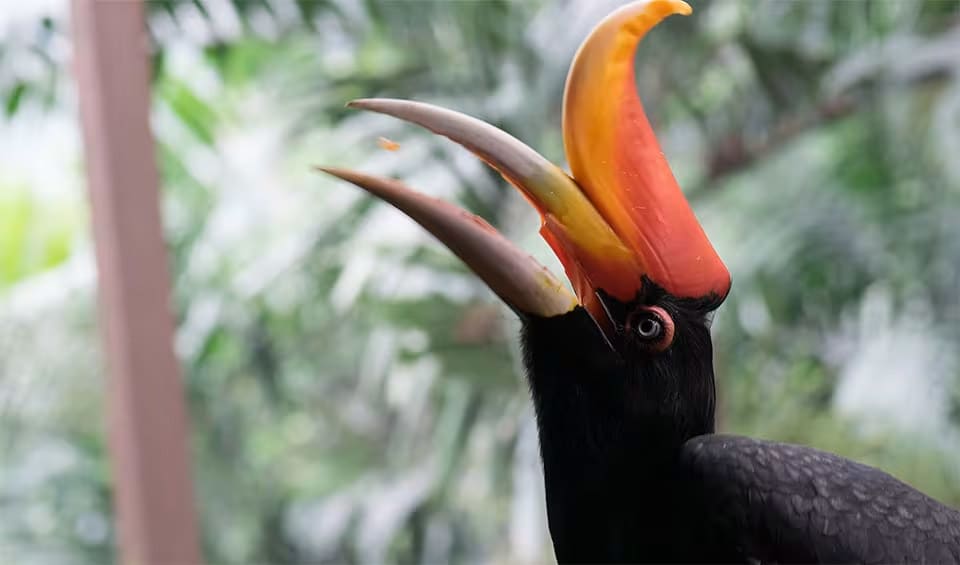Buceros – Asian hornbills
With wingspan double of your arms', these hornbills can literally sweep you off your feet
Asian hornbills are among the most emblematic birds of the Asian continent’s forests. The Great hornbill (Buceros bicornis) is perhaps the most renowned member of this group, easily identifiable by its sizeable yellow and black casque and bill. This casque, while hollow, serves multiple purposes, including being used in dominance displays, as a resonating chamber for their calls, and potentially as a means of sexual selection.
With wingspans that can reach impressive lengths, Asian hornbills are powerful fliers despite their large size. Their wingbeats are heavy and can be heard from a distance, sounding almost like a steam engine chugging through the dense forest canopy. These large wingspans aid them in gliding from tree to tree, necessary in the expansive forests they call home.
Asian hornbills are predominantly found in tropical and subtropical Asia, from the Indian subcontinent to Southeast Asia. They are arboreal, spending most of their lives in the trees, rarely descending to the ground. Their preference for dense, primary forests and untouched woodlands makes them vulnerable to deforestation and habitat destruction. Due to their reliance on large, old trees for nesting and their role as seed dispersers, the presence of hornbills is often an indicator of a healthy forest ecosystem.
The size of Asian hornbills positions them among the largest tree-dwelling birds in their environments. This considerable size also reflects their place in the ecosystem, as they are apex avian predators and key agents in the dispersal of seeds, including those of large fruits that smaller birds cannot handle.
These birds exhibit unique breeding behaviors, with the female sealing herself inside a tree cavity nest, leaving only a small slit through which the male provides food for her and the chicks until they are ready to fledge. This remarkable strategy ensures the safety of the nest from predators but also means that the survival of the female and the offspring is entirely dependent on the male’s ability to provide food.
Species in this genus
Great hornbill
They’re amazingly human-friendly — oh, but do we call it a friendship if we cost their population the chance to survive
Rhinoceros hornbill
35 years. That’s how long it can live in captivity. But, does that equal its time in the rainforests of Borneo, among high canopy greens?
Rufous hornbill
Because of its regular midday chime, it is often referred to as “the clock of the mountains”




